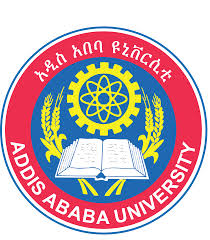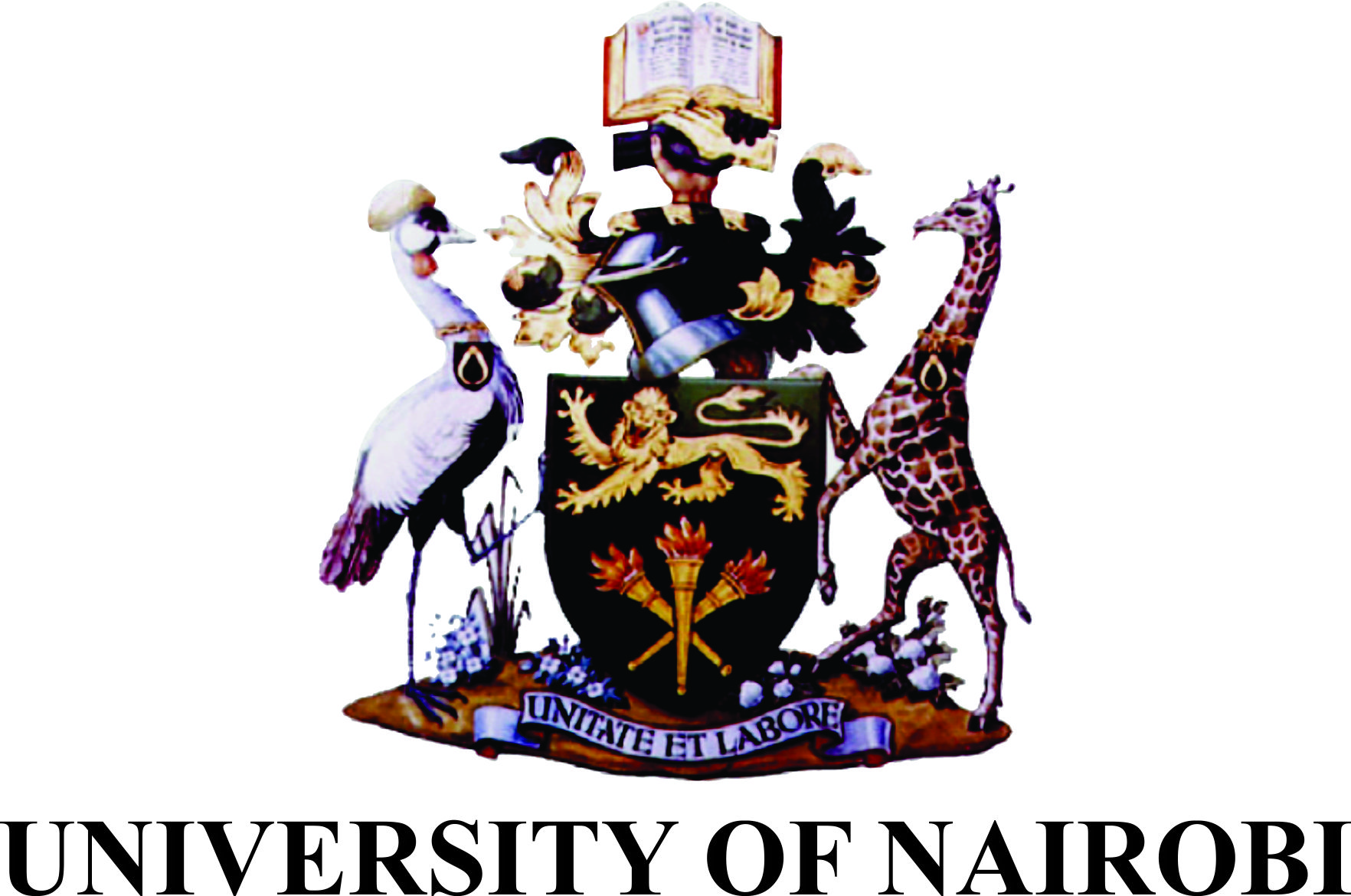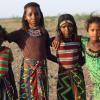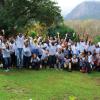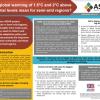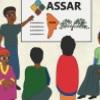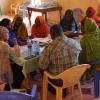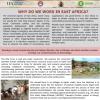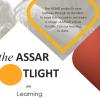Jump to: ASSAR's focus in Ethiopia | Key insights | Country partners & contact details | News stories | Outputs
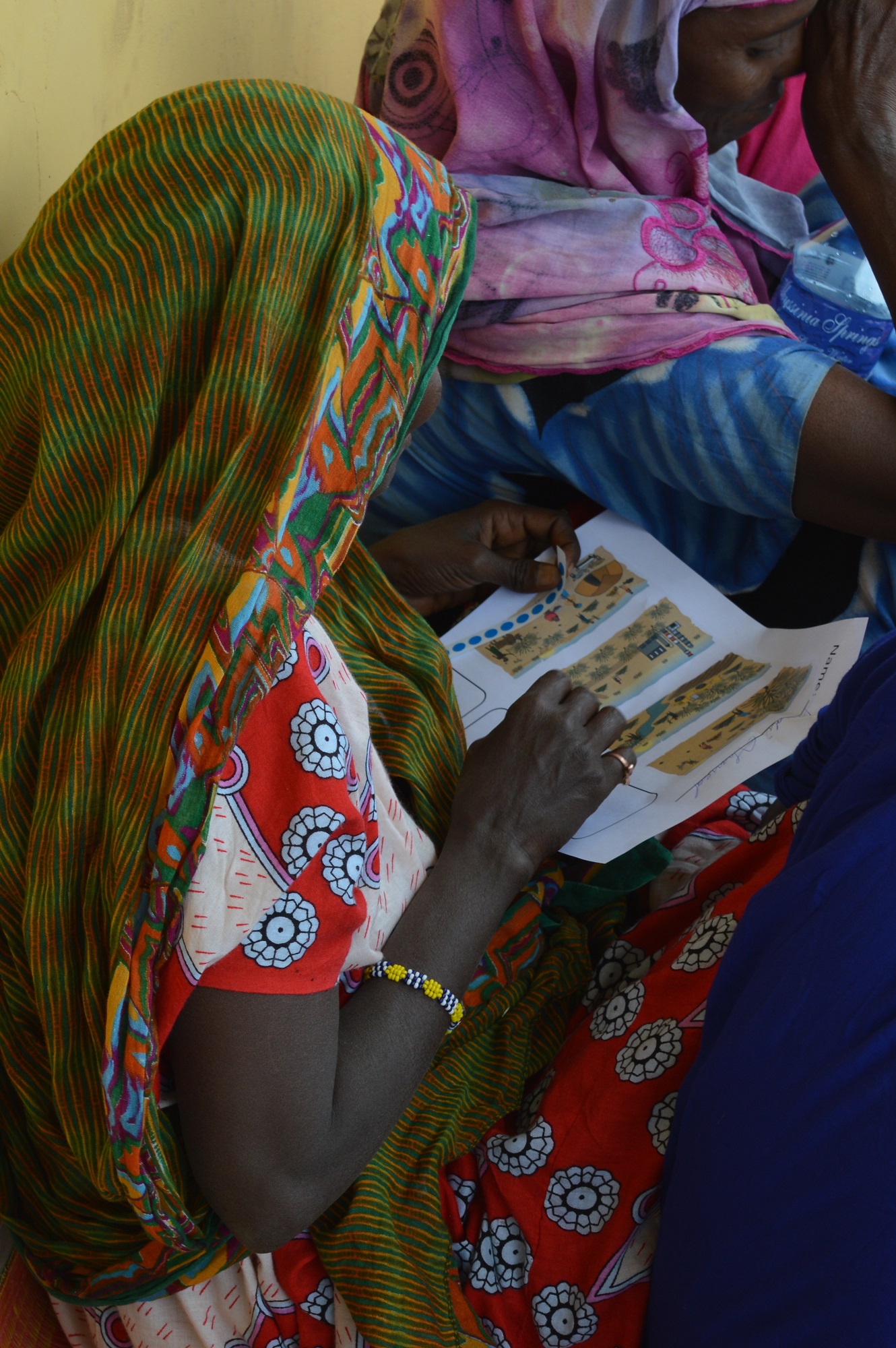
Semi-arid regions like the extensive drylands of Ethiopia, are highly dynamic systems that experience changeable and sometimes extreme climates, adverse environmental change, and a relative insufficiency of natural resources. Historically, people living in these regions have practiced livelihoods that are well-suited to deal with these conditions. Today, however, many communities are showing increased vulnerability due to challenges such as political marginalisation, underdevelopment, poverty, inequality, unfair governance systems, maladaptive policies, and increasing population growth. Climate change is expected to exacerbate existing levels of vulnerability, as temperatures rise, and rainfall and seasonal climate patterns become more variable.
From 2014-2018, ASSAR’s East Africa team worked in Ethiopia and Kenya to better understand these existing and upcoming challenges. Made up of a team of researchers and practitioners from the changing social and environmental conditions interact in practice. We combined these analyses with activities at regional and national levels to generate transferable insights for policy and practice on the changing nature of vulnerability and response to environmental change. We hope that this detailed work can contribute to knowledge on how to enhance the ability of communities, local organisations, and government to adapt to climate change in ways that minimise vulnerability and promote long-term resilience.
Key insights
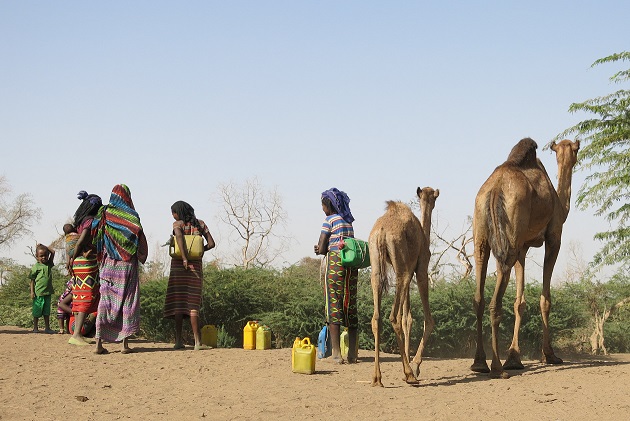
Factors like gender, age, location, livelihood, and status intersect with social and economic characteristics such as household composition, social capital, marital status, income, and education level to determine people’s capacity to respond effectively to climate risks and impacts. Adaptation policies need to consider these intersecting factors explicitly to enable the most marginalised to adapt.
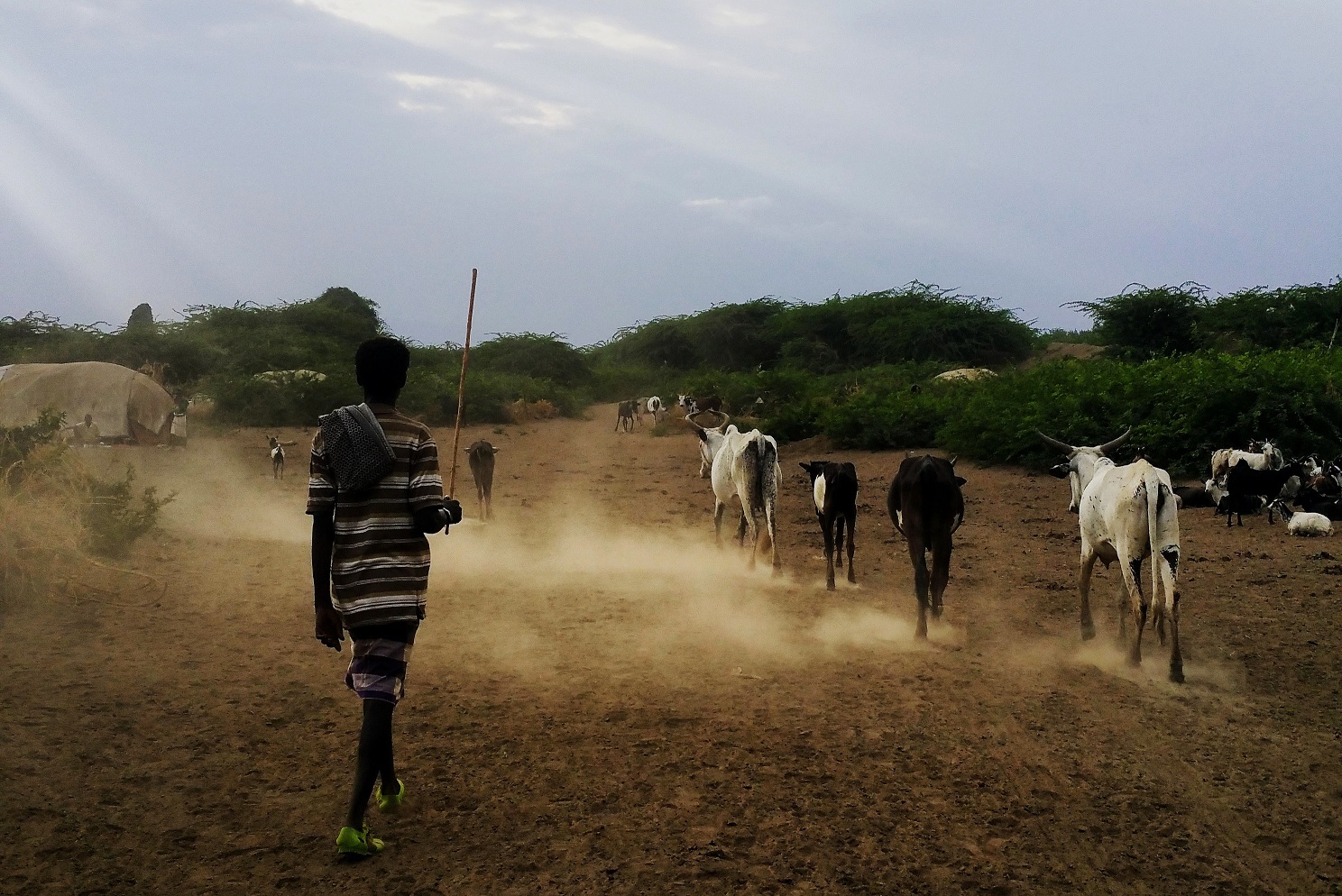
Although decentralisation has strengthened the ability of local officials to respond to local needs flexibly, greater coordination between levels and sectors of government, as well as more resources and better provision of timely and relevant information, would further strengthen action on water governance and disaster risk management.
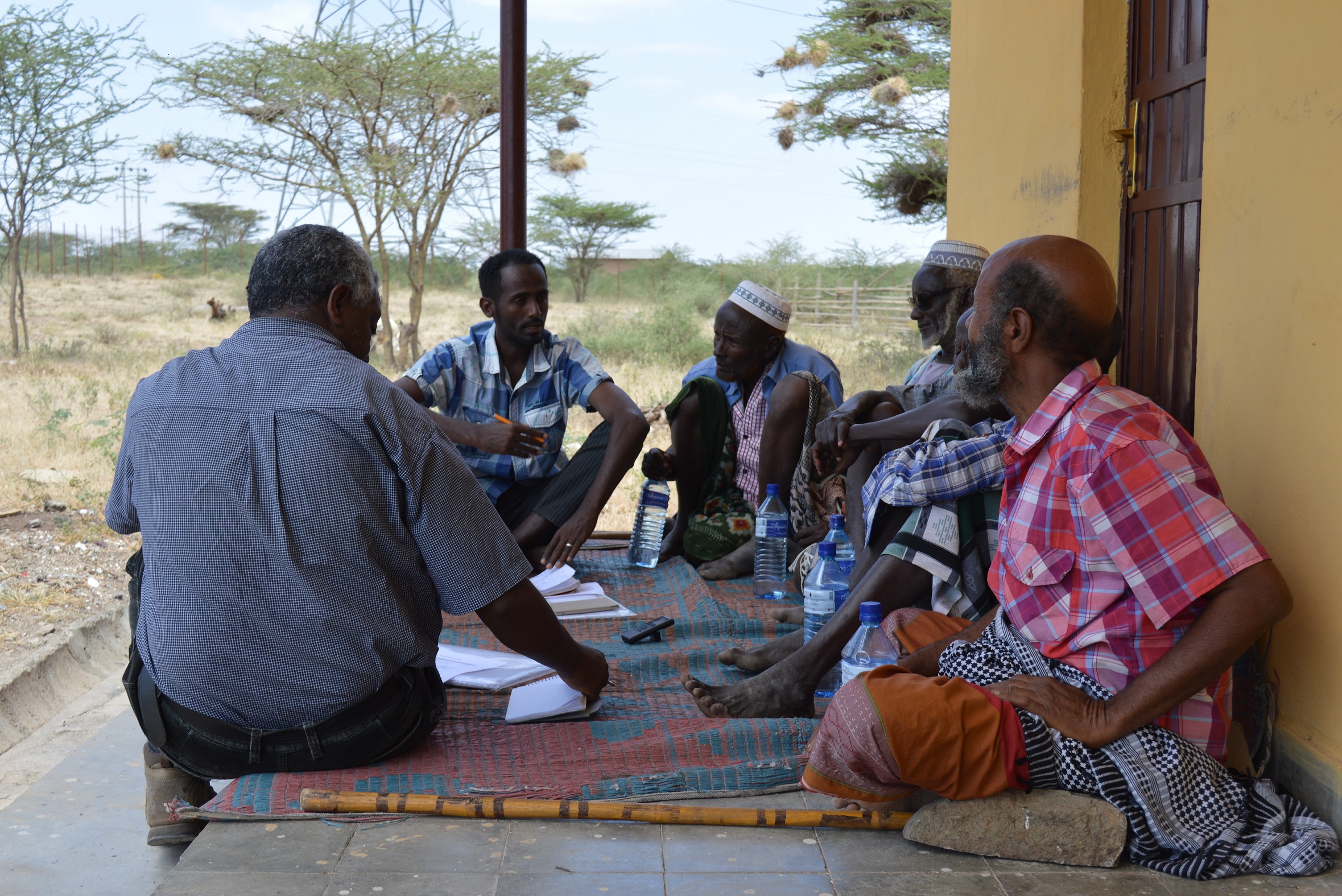
Policies and interventions on key issues such as villagisation, irrigation and invasive species management need to balance the competing needs of different stakeholders and population groups to enable more sustainable and equitable approaches to natural resource management and livelihood support in the face of climate change.
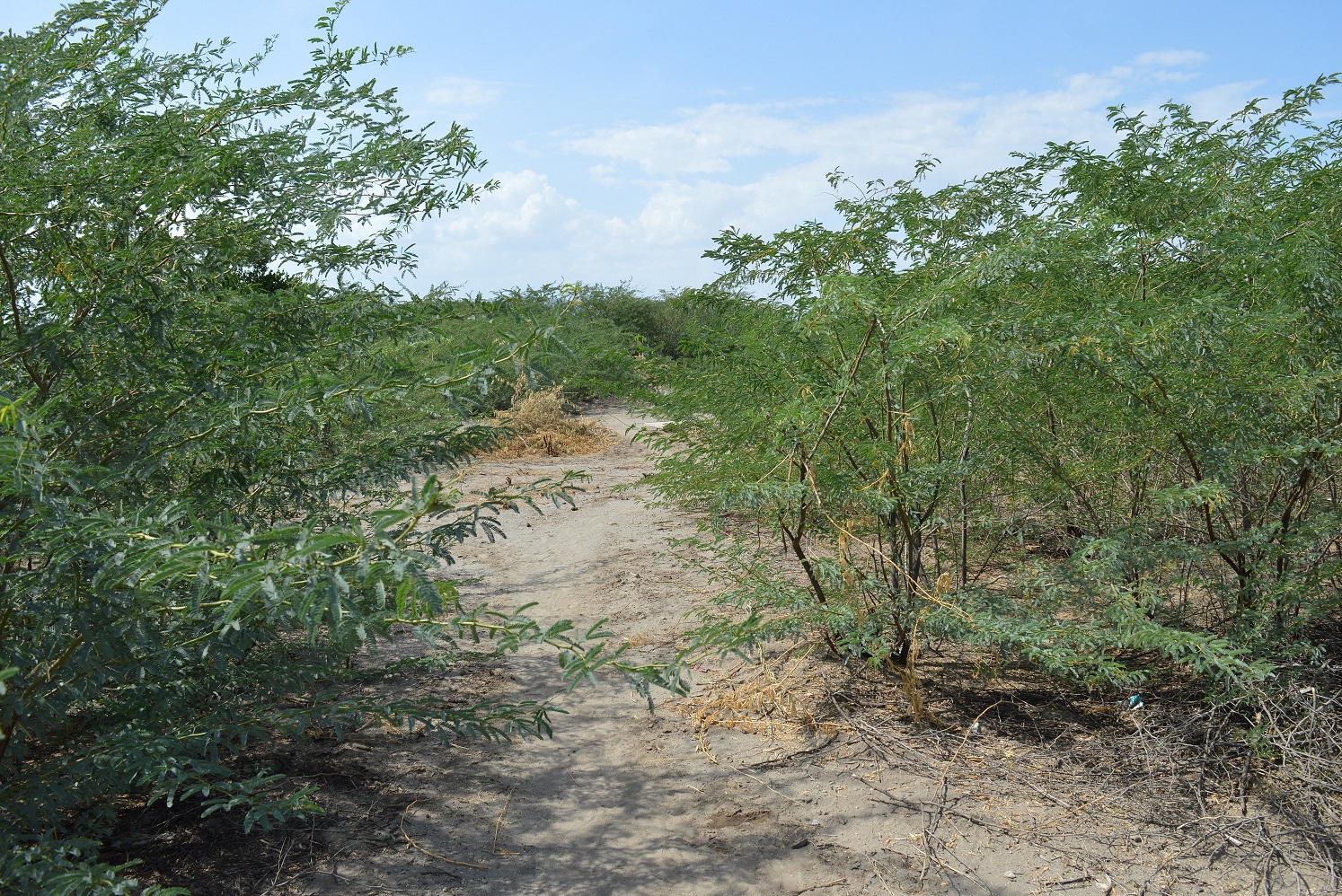
Recognising that interventions will result in trade-offs, with some people winning and others losing, is important. Including affected populations more concretely in decisions about interventions will help to identify the main trade-offs, support more effective design and implementation of interventions, avoid unintended consequences – especially for the most vulnerable – and help to ensure that the needs of those typically excluded from decision making are heard and valued.
Click here for more detail, and ASSAR's specific recommendations for policy, practice, and research
Country partners and contact details
|
Ethiopia work in general: |
Mohammed Assen* (moh_assen@yahoo.com), Addis Ababa University |
| Roger Few (r.few@uea.ac.uk), University of East Anglia | |
| Mark Tebboth (m.tebboth@uea.ac.uk), University of East Anglia | |
| Intra-household dynamics: | Laura Camfield (l.camfield@uea.ac.uk), University of East Anglia |
| Jennifer Leavy (j.leavy@uea.ac.uk), University of East Anglia | |
| Governance for adaptation: | Poshendra Satyal (p.satyal@uea.ac.uk), University of East Anglia |
| Villagisation: | Mohammed Assen (moh_assen@yahoo.com), Addis Ababa University |
| Management of Prosopis: | Mark Tebboth (m.tebboth@uea.ac.uk), University of East Anglia |
| Mohammed Assen (moh_assen@yahoo.com), Addis Ababa University | |
| Research into Use | Daniel Morchain (danielmorchain@gmail.com), Oxfam GB |
Click here to view the regional team members
Related news stories
Related outputs
|
Type |
Author(s) |
Year |
Title |
Details |
Links |
|---|---|---|---|---|---|
| Book chapter | D’Souza, M., Rao, B. and Awashi, S. | 2016 | Community-driven vulnerability assessment and resilience building: Cases from development contexts. | Multi-level climate change planning: Scale, capacity and the ability for local action. | In: S. Moloney, H. Fuenfgeld and M. Granberg (eds.) Local Action on Climate Change. London, UK: Routledge, pp. 92-110. |
| Book chapter | Shaibu, M. T., Alhassan, S. I., Avornyo, F. K., Lawson, E. T., Mensah, A. and Gordon, C. | 2019 | Perceptions and determinants of the adoption of indigenous strategies for adaptation to climate change: Evidence from smallholder livestock farmers in north-west Ghana. | In: J. K. Kuwornu (ed.) Climate Change and Sub-Saharan Africa: The vulnerability and adaptation of food supply chain factors. Vernon Press, pp. 229-249. | |
| Brochure/flyer | ASSAR | 2016 | ASSAR adaptation puzzle. [Puzzle] | Brochure | |
| Brochure/flyer | ASSAR | 2016 | Why do we work in East Africa? [Flyer] | ||
| Brochure/flyer | Basu, R. and Morchain, D. | 2017 | On a road trip to find common ground: Can the goals of the private sector be compatible with sustainable development? [Comic] | ||
| Brochure/flyer | D’Souza, M. and Misquitta, K. | 2018 | From me to we...from mine to ours! A story of how motivation changes people’s perceptions and drives community action. [Story of Change] | ||
| Infographic | ASSAR | 2017 | Working towards more sustainable and equitable management of rangelands in Afar, Ethiopia. | ||
| Infographic | ASSAR | 2018 | Challenging assumptions about gender and climate adaptation. | Oshiwambo infographic | |
| Infographic | ASSAR | 2018 | Dreaming of a better life: Let’s recognise and value people’s changing aspirations. | ||
| Infographic | ASSAR | 2018 | Gender is one of many factors that influence how we are impacted by and respond to climate change. | Oshiwambo infographic | |
| Infographic | ASSAR | 2018 | Household relationships help determine whether and how we can – or can’t – respond to pressures. | ||
| Infographic | ASSAR | 2018 | In semi-arid Ethiopia, gender and household relationships shape how we are impacted by and respond to climate change. | ||
| Infographic | ASSAR | 2018 | In semi-arid regions, women are not necessarily victims or powerless: They are often diversifying their livelihoods and increasing their agency. | ||
| Infographic | ASSAR | 2018 | Multiscale governance: The paradox of top-down policy design. | French infographic | |
| Infographic | ASSAR | 2018 | Sometimes our interventions can lead to unintended consequences: A well does not always lead to wellbeing. | ||
| Infographic | ASSAR | 2018 | What global warming of 1.5°C and higher means for Ethiopia. | ||
| Information brief | Adiku, P. and Khan, A. | 2018 | Migration in climate change hotspots: Opportunities and challenges for adaptation. | Collaborative Adaptation Research Initiative in Africa and Asia (CARIAA). | |
| Information brief | ASSAR | 2015 | East Africa regional diagnostic study: Report summary. | ||
| Information brief | ASSAR | 2015 | Planning for climate change in the semi-arid regions of East Africa. | ||
| Information brief | ASSAR | 2016 | How can we better understand and manage the impacts of droughts? | ||
| Information brief | ASSAR | 2017 | Promoting effective and sustained adaptation in East Africa. | ||
| Information brief | ASSAR | 2018 | Do conservancies enhance the adaptive capacity of communities? Perspectives from ASSAR’s work in Kenya. | ||
| Information brief | ASSAR | 2018 | The gendered challenges of food security: Stories and lessons from ASSAR. | ||
| Information brief | ASSAR | 2018 | What will global warming of 1.5°C and 2°C above pre-industrial levels mean for semi-arid regions? | ||
| Information brief | ASSAR | 2018 | Women, work and adaptive capacity. | ||
| Information brief | ASSAR | 2019 | A focus on wellbeing can link adaptation to outcomes that matter to people. | ||
| Information brief | ASSAR | 2019 | Adaptation is about people. | ||
| Information brief | ASSAR | 2019 | Does villagisation enhance the adaptive capacity of pastoralist communities? Perspectives from ASSAR's work in Ethiopia. | ||
| Information brief | ASSAR | 2019 | What global warming of 1.5°C and higher means for Ethiopia. | ||
| Information brief | Bosworth, B., Hegga, S. and Ziervogel, G. | 2018 | When participation is not enough: Lessons from decentralised water governance in Namibia. | ||
| Information brief | CARIAA | 2018 | Climate adaptation policy. | ||
| Information brief | CARIAA | 2018 | Understanding vulnerabilities using a hotspot approach. | Collaborative Adaptation Research in Africa and Asia (CARIAA) | |
| Information brief | Degefu, M. A., Assen, M. and Tesfaye, M. | 2019 | Prosopis juliflora: Impacts and management in the face of climate change in Ethiopia’s Middle Awash Valley. | ||
| Information brief | Few, R. | 2017 | Drought does not work alone. | ||
| Information brief | Few, R., Singh, C., Spear, D., Davies, J., Tebboth, M. G. L., Sidibe, A, Mensah, A. and Thompson-Hall, M. | 2018 | When adaptation barriers and enablers intersect: Key considerations for adaptation planning drawn from ASSAR’s findings. | ||
| Information brief | Lumosi, C. and McGahey, D. | 2016 | Communicating climate change for adaptation: Challenges, successes and future priorities. | ||
| Information brief | McGahey, D. | 2016 | Climate change, ecosystem services and adaptation in East Africa’s semi-arid regions: Early diagnostics of critical knowledge gaps for landscape conservation. | ||
| Information brief | Rao, N., Lawson, E. T., Raditloaneng, W. N., Solomon, D. and Angula, M. N. | 2016 | Gendered vulnerabilities to climate change: Insights from the semi-arid regions of Africa and Asia. | GSDR brief | |
| Journal article | Cundill, G., Harvey, B., Tebboth, M., Cochrane, L., Currie-Alder, B., Vincent, K., Lawn, J., Nicholls, R. J., Scodanibbio, L., Prakash, A., New, M., Wester, P., Leone, M., Morchain, D., Ludi, E., DeMaria-Kinney, J., Khan, A. and Landry, M. | 2018 | Large-scale transdisciplinary collaboration for adaptation research: Challenges and insights. | Global Challenges, 1700132. | |
| Journal article | Deshpande, T., Michael, K. and Bhaskara, K. | 2018 | Barriers and enablers of local adaptive measures: A case study of Bengaluru’s informal settlement dwellers. | Local Environment, DOI: 10.1080/13549839.2018.1555578. | Information brief |
| Journal article | Few, R. and Tebboth, M. G. L. | 2018 | Recognising the dynamics that surround drought impacts. | Journal of Arid Environments, 157: 113-115. | Summary; Information brief |
| Journal article | Few, R., Morchain, D., Spear, D., Mensah, A. and Bendapudi, R. | 2017 | Transformation, adaptation and development: Relating concepts to practice. | Palgrave Communications, 3: 17092. | Summary |
| Journal article | Gajjar, S. P., Singh, C. and Deshpande, T. | 2018 | Tracing back to move ahead: A review of development pathways that constrain adaptation features. | Climate and Development. | Summary |
| Journal article | McGahey, D. J. and Lumosi, C. K. | 2018 | Information brief | ||
| Journal article | Morchain, D., Prati, G., Kelsey, F. and Ravon, L. | 2015 | Summary | ||
| Journal article | Rao, N., Lawson, E. T., Raditloaneng, W. N., Solomon, D., and Angula, M. N. | 2017 | Gendered vulnerabilities to climate change: Insights from the semi-arid regions of Africa and Asia. | Climate and Development. | Information brief |
| Journal article | Singh, C. | 2017 | Using life histories to understand temporal vulnerability to climate change in highly dynamic contexts. | SAGE Research Methods Cases. | Summary; Manual |
| Journal article | Singh, C. | 2019 | Migration as a driver of changing household structures: Implications for household livelihoods and adaptation. | Migration and Development. | Summary |
| Journal article | Singh, C., Daron, J., Bazaz, A., Ziervogel, G., Spear, D., Krishnaswamy, J., Zaroug, M. and Kituyi, E. | 2018 | The utility of weather and climate information for adaptation decision-making: Current uses and future prospects in Africa and India. | Climate and Development, 10(5): 389-405. | Summary; Video |
| Journal article | Spear, D. and Chappel, A. | 2018 | Livelihoods on the edge without a safety net: The case of smallholder crop farming in north-central Namibia. | Land, 7(3): 79. | Summary |
| Journal article | Totin, E., Butler, J. R., Sidibé, A., Partey, S., Thornton, P. K. and Tabo, R. | 2018 | Can scenario planning catalyse transformational change? Evaluating a climate change policy case study in Mali. | Futures, 96: 44-56. | Summary |
| Journal article | Totin, E., Segnon, A. C., Schut, M., Affognon, H., Zougmoré, R. B., Rosenstock, T., and Thornton, P. K. | 2018 | Institutional perspectives of climate-smart agriculture: A systematic literature review. | Sustainability, 10(6): 1990. | Summary |
| Photo essay | Leavy, J. | 2016 | Changing aspirations and the realities of climate change adaptation for the young people in Ethiopia and Kenya. | ||
| Publication in progress | Camfield, L., Leavy, J., Endale, S. and Tefere, T. | _ | ‘People who once had 40 cattle are left only with fences’: Coping with Persistent Drought in Awash, Ethiopia. | Presentation | |
| Journal article | Conway, D., Nicholls. R.J., Brown, S., Tebboth, M. G. L., Adger, N., Bashir, A., Biemans, H., Crick, F., Lutz, A. F., de Campos, R. S., Said, M., Singh, C., Zaroug, M. A. H., Ludi, E., New, M. and Wester, F. | 2019 | Recognising the need for bottom-up assessments of climate risks and adaptation in climate-sensitive regions. | ||
| Publication in progress | Degefu, M. A., Assen, M. and Satyal, P. | _ | Villagisation and water resource in the Middle Awash Valley of Ethiopia: Implications for climate change adaptation. | Poster | |
| Publication in progress | Degefu, M. A., Assen, M., Few, R. and Tebboth, M. G. L. | _ | Perceptions of local people on impacts and management of Prosopis juliflora in arid/semi-arid regions of the Middle Awash Valley, Ethiopia. | Poster | |
| Publication in progress | Duraisamy, V., Mugari, E., Segnon, A. C., Togarepi, C., Tesfaye, M., Alare, R. S. and Misra, G. | _ | Landsat-based land use / land cover mapping and cross-site analysis at South Asia and Africa. | ||
| Publication in progress | Few, R., Satyal, P. and Tebboth, M. G. L. | _ | Using a justice/ capabilities framing to understand people's vulnerability and adaptive capacity in the drylands of East Africa. | ||
| Publication in progress | Few, R., Singh, C., Spear, D., Tebboth, M., Davies, J., Thompson-Hall, M. and Muhvich, K. | _ | The role of culture as a barrier and enabler to adaptation in semi-arid lands. | ||
| Publication in progress | Hegga, S. and Kunamwene, I. | _ | Mapping actor influence in climate adaptation practices: The case of north-central Namibia. | Poster | |
| Publication in progress | Hegga, S., Kunamwene, I. and Ziervogel, G. | _ | Local participation in decentralised water governance: Insights from north-central Namibia. | Presentation | |
| Publication in progress | Kibet, S. and Wasonga, O. | _ | Making community wildlife conservancies sustainable. | ||
| Publication in progress | Krishnaswamy, J., Bunyan, M., New, M., Bazaz, A., Wolski, P. and Daron, J. | _ | Are semi-arid regions in Africa and Asia climate-change hotspots? | ||
| Publication in progress | Maharjan, A., de Campos, R. S. Das, S., Srinivas, A., Bhuiyan, M. R. A., Ishaq, S., Shrestha, K., Dilshad, T., Umar, M. A., Bhadwal, S., Ghosh, T., Singh, C., Suckall, N. and Vincent. K. | _ | Migration and adaptation in the context of environmental change: Lessons from interdisciplinary work in South Asia. | ||
| Publication in progress | Mulwa, C. and Visser, M. | _ | Weather uncertainty and demand for information in agricultural technology adoption: Case study from Namibia. | ||
| Publication in progress | Perez, T. | _ | The power of workshop fatigue in transdisciplinary partnerships. | Summary | |
| Publication in progress | Rahman, A., Basu, R. and Singh C. I. | _ | Exploring the interface between climate change and migration: Evidence from India. | ||
| Publication in progress | Rahman, A., Singh, C. and Bazaz A. | _ | Climate change in urban areas: Differential vulnerability and adaptive actions in Bangalore. | ||
| Publication in progress | Rao, N. and Leavy, J. | _ | Domestic water, health and wellbeing: Gendered trade-offs in times of scarcity. Evidence from East Africa. | ||
| Publication in progress | Rao, N., Mishra, A., Prakash, A., Singh, C., Qaisrani, A., Poonacha, P., Vincent, K. and Bedelian, C. | _ | Women’s agency and adaptive capacity in climate change hotspots: A qualitative comparative analysis from Asia and Africa. | ||
| Publication in progress | Rao, N., Singh, C., Solomon, D., Camfield, L., Alare, R. S., Angula, M., Poonacha P., Sidibe, A. and Lawson, E. | _ | Managing risk, changing aspirations and household dynamics: Implications for wellbeing and adaptation in semi-arid Africa and India. | Summary; Presentation | |
| Publication in progress | Salifu, A., Lawson, E. and Wrigley-Asante, C. | _ | Social differentiation and adaptive responses adopted by farmers in a water scarce landscape: The case of groundnut farmers in the Lawra and Nandom Districts. | Poster | |
| Publication in progress | Satyal, P., Budds, J., Few, R., Bahir, A., Kibet, S. | _ | Adaptation to climate change in the context of decentralisation: Exploring multi-level governance of water-related issues in semi-arid areas of East Africa. | Presentation | |
| Publication in progress | Scodanibbio, L. | _ | What have we learned from working collaboratively on the ASSAR project? | ||
| Publication in progress | Sidibe, A., Sanga. U., Rajiv. P. and Olabisi, L. S. | _ | Translating mental models into system dynamics models for analyzing food security. | ||
| Publication in progress | Sidibe, A., Totin, E. and Olabisi, L. S. | _ | Analysing consensus building in the participatory scenario process: A case of transformative scenario process in Mali. | ||
| Publication in progress | Singh, C., Tebboth, M. G. L., Spear, D., Ansah, P. and Mensah, A. | _ | Opening up the methodological toolkit on climate change vulnerability and adaptation research: Reflections from using life history approaches. | ||
| Publication in progress | SK, N. | _ | Situating vulnerability in climate change adaptation research: Insights from India and Ghana. | ||
| Publication in progress | SK, N., Bazaz, A., Mensah, A., Scodanibbio, L., Tebboth, M., Few, R., Bendapudi, R., Rao, R., Badiger, S., Rao, N., Kibet, S., Wasonga, O. and Spear, D. | _ | Socially-differentiated vulnerability and adaptation practice in Africa and India. | ||
| Publication in progress | Solomon, D. and Badiger, S. | _ | The evolution of vulnerability: Rethinking the scope of indicator-based assessments in agrarian socio-ecological systems. | ||
| Journal article | Spear, D., Selato, J. C., Mosime, B. and Nyamwanza, A. | 2019 | Harnessing diverse knowledge and belief systems to adapt to climate change in semi-arid rural Africa. | Summary; Presentation | |
| Publication in progress | Tebboth, M. G. L., Few, R., Assen, M. and Degefu, M. | _ | Valuing Prosopis juliflora? Analysing ecosystem service narratives to understand environmental management dilemmas. | ||
| Publication in progress | Tebboth, M. G. L., Singh, C., Spear, D., Mensah, A. and Ansah, P. | _ | The role of mobility in changing livelihood trajectories: Implications for vulnerability and adaptation in semi-arid regions. | Summary | |
| Publication in progress | Totin, E., Sidibe, A. and Thompson-Hall, M. | _ | Governance of resources: Is there space for implementing the land policy under complex customary tenure practices? | Presentation | |
| Publication in progress | Totin, E., Sidibe, A., Thompson-Hall, M. and Olabisi, L. | _ | Achieving sustainable future objectives under uncertain conditions: Application of a reflexive framework to adaptation trajectories in rural Mali. | Summary | |
| Publication in progress | Wasonga, O., Kibet, S., Tebboth, M. G. L., Few, R. | _ | Do wildlife conservancies enhance the adaptive capacity of local communities? Perspectives from northern Kenya. | ||
| Publication in progress | Ziervogel, G., Satyal, P., Basu, R., Mensah, A. and Singh, C. | _ | Vertical integration for climate change adaptation in the water sector: Lessons from decentralisation in Africa and India. | ||
| Report | ASSAR | 2016 | ASSAR East Africa (Ethiopia) Research-into-Use and Stakeholder Engagement Event. | ||
| Report | ASSAR | 2019 | Changing ecosystem services are increasing people’s vulnerability in semi-arid regions. | ||
| Report | ASSAR | 2019 | Collaborative research consortia are complex, but have great potential. | ||
| Report | ASSAR | 2019 | Effective adaptation means different things to different people. | ||
| Report | ASSAR | 2019 | Forward-looking inclusive governance arrangements across different scales are a critical enabler for adaptation | ||
| Report | ASSAR | 2019 | Enhanced knowledge systems are critical for climate change adaptation. | ||
| Report | ASSAR | 2019 | Gender is one of many social factors influencing responses to climate change. | ||
| Report | ASSAR | 2019 | Global warming of 1.5°C and higher brings profound challenges to semi-arid regions. | ||
| Report | ASSAR | 2019 | Mobility is an inherent dynamic among vulnerable populations. | ||
| Report | ASSAR | 2019 | Participatory processes build adaptive capacity and agency and can help transform systems. | ||
| Report | ASSAR | 2019 | Putting people at the centre can enable effective adaptation in semi-arid regions: Insights from ASSAR. | Summary | |
| Report | ASSAR | 2019 | Vulnerability and adaptation to climate change in semi-arid Ethiopia. | ||
| Report | Nkemelang, T., Bouwer, R., Hoffman, T., and New, M. | 2018 | Determining what global warming of 1.5°C and higher means for the semi-arid regions of Botswana, Namibia, Ghana, Mali, Kenya and Ethiopia: A description of ASSAR’s methods of analysis. | ||
| Report | Rokitzki, M. and Morchain, D. | 2015 | Climate change adaptation practice in semi-arid regions: Views and insights by practitioners. | ||
| Report | Tebboth, M. G. L. and Few, R. | 2018 | Considering the future of Prosopis: Participatory Scenario Analysis in Afar, Ethiopia. | ||
| Report | Tebboth, M. G. L. and Few, R. | 2018 | Considering the future of the rangelands: Participatory Scenario Analysis in Isiolo, Kenya. | ||
| Spotlight | ASSAR | 2015 | Spotlight on Adaptation Futures. | ||
| Spotlight | ASSAR | 2016 | Spotlight on learning. | ||
| Spotlight | ASSAR | 2016 | Spotlight on wellbeing. | ||
| Spotlight | ASSAR | 2017 | Spotlight on champions. | ||
| Spotlight | ASSAR | 2017 | Spotlight on water. | ||
| Spotlight | ASSAR | 2018 | Spotlight on capacity building. | ||
| Spotlight | ASSAR | 2018 | Spotlight on Transformative Scenario Planning. | ||
| Spotlight | ASSAR | 2019 | Spotlight on Research for Impact. | ||
| Thesis | Bridges, K. | 2017 | The role of climate information and advisory services in drought resiliency: A comparative case study in Tamil Nadu, India. | Master's thesis. Oxford University. | |
| Thesis | Gitonga, Z. | _ | Leveraging climate information, improved adaptive technology and migration to build resilience and reduce vulnerability of rural communities to climate risks in arid and semi-arid lands. | PhD thesis. University of Cape Town. | |
| Thesis | Mulwa, C. | _ | Managing vulnerability to risks in smallholder farming: Essays on sustainable agricultural intensification and climate change adaptation in developing countries. | PhD thesis. University of Cape Town. | |
| Thesis | Nkemelang, T. | 2018 | Temperature and precipitation extremes under current, 1.5 and 2.0 degree global warming above pre-industrial levels and implications for climate change vulnerability: Botswana case study. | Master's thesis. University of Cape Town. | |
| Thesis | Sajith, S. | 2017 | Changing cropping patterns and its implications on household food security and nutrition. | Master's thesis. TERI School of Advanced Studies. | |
| Thesis | Yidana, A. A. | 2016 | Social differentiation in the vulnerability and adaptation patterns among smallholder farmers: Evidence from north western Ghana. | Master's thesis. University of Ghana. | |
| Toolkit/guide | ASSAR | 2016 | Climate adaptation resource guide for dryland & semi-arid areas. [Resource Guide] | ||
| Toolkit/guide | ASSAR | 2018 | Heat stress: How does one recognise heat stress? What should you do when a person suffers from heat stress? [Pamphlet] | Poster | |
| Toolkit/guide | ASSAR | 2018 | Planning for a harsher future. [Brochure] | English poster; Oshiwambo brochure; Oshiwambo poster | |
| Toolkit/guide | ASSAR, Oxfam, University of Cape Town | 2019 | Massive Open Online Course on Research for Impact. [MOOC] | ||
| Toolkit/guide | Davies, J., Singh, C., Tebboth, M. G. L., Spear, D., Mensah, A. and Ansah, P. | 2018 | Conducting life history interviews: A how-to guide. [Manual] | ||
| Toolkit/guide | Hegde, G., Singh, C. and Kaur, H. | 2018 | Adaptation as innovation: Lessons from smallholder farmers in rainfed Karnataka. [Information Booklet] | Kannada booklet | |
| Toolkit/guide | Morchain, D. and Kelsey, F. | 2016 | Finding ways together to build resilience: The Vulnerability and Risk Assessment methodology. [Toolkit] | Oxfam. | Poster |
| Video | ASSAR | 2015 | ASSAR Theory of Change. | ||
| Video | ASSAR | 2015 | ASSAR’s animated climate messages for Africa and Asia. | ||
| Video | ASSAR | 2015 | ASSAR’s animated climate messages for East Africa. | ||
| Video | ASSAR | 2015 | Introducing ASSAR. | ||
| Video | ASSAR | 2015 | Understanding gender in the context of climate and development. | ||
| Video | ASSAR | 2016 | Research-into-Use in ASSAR. | ||
| Video | ASSAR | 2016 | Transformative Scenario Planning in ASSAR. | ||
| Video | ASSAR | 2017 | Does climate information help people address current and future climate risks? | ||
| Video | ASSAR | 2017 | Experiential learning to understand climate change. | ||
| Video | ASSAR | 2017 | Experiential learning: Farming Juggle. | ||
| Video | ASSAR | 2017 | Experiential learning: Paying for Predictions. | ||
| Video | ASSAR | 2017 | Experiential learning: Seasonal Forecast. | ||
| Video | ASSAR | 2017 | Experiential learning: Vulnerability Walk. | ||
| Video | ASSAR | 2017 | Small Opportunities Grant: Migration. | ||
| Video | ASSAR | 2018 | Considering the future of Prosopis: Participatory Scenario Analysis in Afar, Ethiopia. | ||
| Video | ASSAR | 2018 | How thinking about the future improved farming practices in Ghana’s Upper West region. | ||
| Video | ASSAR | 2018 | Theatre of the oppressed: Adaptation futures 2018. | ||
| Video | ASSAR | 2019 | Challenging predominant views on climate change with Theatre of the Oppressed. Delft, Cape Town. January 2019. | ||
| Video | ATREE | 2019 | Is an increase in green cover good? | ||
| Video | ATREE | 2019 | Wells and a lack of wellbeing. | ||
| Web article | Cundill, G. | 2017 | ASSAR–R2A Climate Month: Time’s Up. | Research to Action. 4 December 2017. | |
| Web article | DeMaria-Kinney, J. | 2017 | Introduction to Research-into-Use at ASSAR. | Research to Action. 9 November 2017. | |
| Web article | Joubert, L. | 2018 | African small-scale farmers need more than just land to survive climate change. | The Namibian. 31 May 2018. | Use and communication of climate information to support uptake of adaptation action in the semi-arid regions of Africa and Asia. |
| Working paper | Bazaz, A., DeMaria-Kinney, J., Scodanibbio, L. and Koduganti Venkata, M. | 2019 | Enabling research-practice collaboration: Models and approaches | ||
| Working paper | Degefu, M. A., Assen, M. and McGahey, D. | 2018 | Climate variability and impact in ASSAR’s East African region. | ||
| Working paper | Few, R., Bendapudi, R., Mensah, A. and Spear, D. | 2016 | Transformation in adaptation: Learning from ASSAR’s regional diagnostic studies. | ||
| Working paper | Few, R., Satyal P., Assen M., Camfield L., Leavy J. and McGahey D. | 2018 | The development-adaptation spectrum in dryland East Africa: mapping risks, responses and critical questions for social research. | ||
| Working paper | Few, R., Satyal, P., McGahey, D., Leavy, J., Budds, J., Assen, M., Camfield, L., Loubser, D., Degefu, M. A. and Bewket, W. | 2015 | Vulnerability and adaptation to climate change in the semi-arid regions of East Africa. | ||
| Working paper | Koelle, B., Scodanibbio, L., Vincent, K., Harvey, B., van Aalst, M., Rigg, S., Ward, N. and Steenbergen, M. | _ | A guide to effective collaboration and learning in consortia: Building resilience to rising climate risks. | Original publication by Building Resilience and Adaptation to Climate Extremes and Disasters (BRACED). | |
| Working paper | Misquitta, K. and Thatte, K. | 2018 | Whose appropriate technology? Understanding the adoption of micro-irrigation in the face of climate and policy uncertainty. | ||
| Working paper | Phadtare, A., Banerjee, S. and Bendapudi, R. | 2019 | Are changes in land use land cover influencing gender dynamics in semi-arid areas. | ||
| Working paper | Prakash, A., Cundill, G., Scodanibbio, L., Vincent, K., Nathe, N., DeMaria-Kinney, J., Mishra, A., Morchain, D., Piryani, A., Soumelong Ehode, L., and Sukla, D. | 2019 | Climate change adaptation research for impact. | CARIAA Working Paper no. 22. Collaborative Adaptation Research in Africa and Asia (CARIAA). | |
| Working paper | Scodanibbio, L. | 2017 | What have we learned from working collaboratively on the ASSAR project? | Adaptation at Scale in Semi-Arid Regions (ASSAR). | |
| Working paper | Singh, C., Urquhart, P. and Kituyi, E. | 2016 | From pilots to systems: Barriers and enablers to scaling up the use of climate information services in smallholder farming communities. | ||
| Working paper | Zaroug, M., New, M. and Lennard, C. | 2019 | Climate change in African countries at 1.5 and 2.0 degrees: Variation by geography, aridity and continentality. | ||
| Video | ASSAR | 2019 | Does knowledge enhance adaptive capacities in semi-arid regions? Perspectives from ASSAR's work. |
